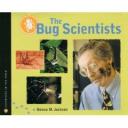Summary
The Bug Scientists, written by Donna M. Jackson, takes a different approach by teaching students about insects but also about the men and women who study them in different ways. The book introduces us to insects and their attributes (body parts, survival methods), as well as a few different ways humans study bugs or use them in their study of other things. For instance, we meet a forensic entomologist who uses maggots to solve murders. Your 3rd – 6th graders will love some of the “gross” pictures and details, as well as the section on “amazing insects” at the end.
Curriculum Connections
The Bug Scientists is a great way to teach children about insects in a way that acknowledges their initial reactions but tells a compelling story that bugs are wonderful and interesting creatures . The photos are big enough for classes to see during oral reading, and detailed enough for students to study on their own. This book is for grades 3-6, and it can be a good resource for learning about living systems, the insect class, and the invertebrate phylum.
Additional Resources
- Students can learn more about classifying insects at www.insects.org, a bug bio site.
- The students can learn more about the growth of butterflies here, which gives directions for insect science project experiment to determine how temperature affects the growth of butterflies.
- This site has some good Q&A you can use with students when teaching about insects
Book: Bug Scientists
Author: Donna M. Jackson
Publisher: Sandpiper
Publication Date: 2004
Pages: 48 pages
Grade Range: 3-6
ISBN-10: 0618432329

